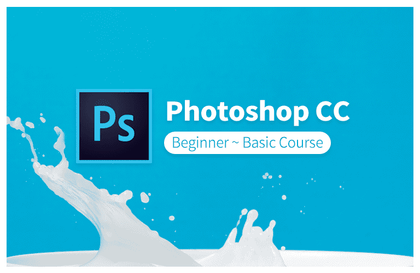
Adobe Photoshop CC 2019 Beginner's Guide for Beginners
usefulit
This is a Photoshop course for beginners that will teach you the most basic and important functions of the graphic editing tool Photoshop.
입문
Photoshop
This course focuses on developing practical visualization skills that can be immediately applied in the workplace by utilizing Seaborn, a core tool for data visualization, and plotly/Dash for building interactive dashboards. Through various hands-on exercises, you can enhance both your ability to create insight-driven visual materials and implement web-based dashboards.
You can understand the operating principles of Trace and Layout, which are the core components of Plotly.
You can set detailed design elements such as the graph's title, axes, legend, colors, and more.
You can effectively arrange multiple graphs in a single Figure.
Master the core components of Plotly to build a solid foundation in interactive visualization!
If Part 1-2 covered the basics and applications of static visualization using Seaborn,
from Part 3 onwards, we enter the world of Plotly, an interactive visualization library.
In this lecture, you'll understand Plotly's core components - Trace (data) and Layout (design),
and learn both plotly.express for quick visualization and plotly.graph_objects for detailed control.
You will also learn how to control all visual elements of graphs through update_layout.
After completing this lecture, you will be able to create basic charts using Plotly and customize layouts,
and you will lay the foundation for implementing advanced charts and Dash dashboards that you will learn in the next Part 4.
Understand the main components of Plotly (Trace, Layout) and how they work.
You can understand the differences between the plotly.express method and the plotly.graph_objects method and utilize them appropriately.
You can set/change the entire layout using the update_layout() method.
You can use make_subplots() to arrange multiple traces in a single figure.
Python
Plotly
Understand the core components of Plotly and practice using plotly.express and make_subplots.
1. Visualization Components
2. Trace
3. Creating Subplots
4. plotly.express - 1
5. plotly.express - 2
Learn how to control the detailed design of charts using the update_layout method.
1. layout (title)
2. layout (axis)
3. layout (legend)
4. layout (color) - 1
5. layout (color) - 2
6. layout (Annotation)
7. layout (Shape)
This course does not provide instructor Q&A.
Lecture materials and lesson plans can be downloaded from [Lesson Materials] in the first lesson of the first section.
Who is this course right for?
Those who want to learn dynamic (Interactive) visualization beyond Seaborn and Matplotlib
Someone who aims to create web dashboards using Plotly/Dash in the future
All
13 lectures ∙ (9hr 15min)
Course Materials:
$37.40
Check out other courses by the instructor!
Explore other courses in the same field!